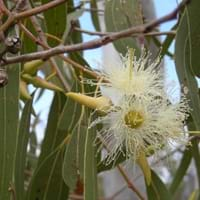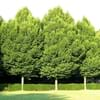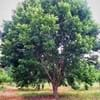Life Span
Perennial
Perennial
Origin
Europe, Turkey
Australia
Types
Not available
Eucalyptus absita, Eucalyptus acies, Eucalyptus calycogona
Number of Varieties
Not Available
Habitat
hedge rows, Woodlands
River side
USDA Hardiness Zone
2-9
9-10
AHS Heat Zone
Not Available
10-1
Sunset Zone
Not Available
5, 6, 8, 9, 10, 11, 12, 13, 14, 15, 16, 17, 18, 19, 20, 21, 22, 23, 24
Habit
Upright/Erect
Oval or Rounded
Flower Color
Yellow, Green, Orange Red
Pink, Red, White
Flower Color Modifier
Bicolor
Not Available
Fruit Color
Green
Yellow Brown
Leaf Color in Spring
Light Green
Dark Green
Leaf Color in Summer
Dark Green
Gray Green
Leaf Color in Fall
Lemon yellow, Yellow green, Orange Red
Gray Green
Leaf Color in Winter
Not Available
Gray Green
Plant Season
Summer, Fall, Winter
Winter
Sunlight
Full Sun, Partial Sun
Full Sun
Type of Soil
Loam
Well drained
The pH of Soil
Acidic, Neutral
Slightly Alkaline
Soil Drainage
Average
Well drained
Bloom Time
Spring
Early Summer, Spring
Tolerances
Drought, Pollution, Variety of soil types
Drought
Where to Plant?
Ground
Ground
How to Plant?
Grafting, Seedlings
Stem Planting
Plant Maintenance
Low
Medium
Watering Requirements
Average Water Needs, Do Not over Water, Keep the ground moist but not water-logged, Requires regular watering
Requires regular watering, Requires watering in the growing season, Use and maintain water-efficient soaker hoses, Water Deeply, Water twice a day in the initial period
In Summer
Lots of watering
Lots of watering
In Spring
Moderate
Moderate
In Winter
Average Water
Average Water
Soil pH
Acidic, Neutral
Slightly Alkaline
Soil Type
Loam
Well drained
Soil Drainage Capacity
Average
Well drained
Sun Exposure
Full Sun, Partial Sun
Full Sun
Pruning
Cut or pinch the stems, Remove damaged leaves, Remove dead branches, Remove dead leaves
Prune for shortening long shoots, Prune if you want to improve plant shape, Prune ocassionally, Remove dead or diseased plant parts
Fertilizers
All-Purpose Liquid Fertilizer, Nitrogen, Water soluble fertilizers
All-Purpose Liquid Fertilizer
Pests and Diseases
Aphids, Caterpillars, Powdery mildew
Canker, head rot, Mealybugs, Root rot
Plant Tolerance
Drought, Pollution, Variety of soil types
Drought
Flowers
Insignificant
Yes
Flower Petal Number
Not Available
Single
Fragrant Leaf
Not Available
Yes
Fragrant Bark/Stem
No
Yes
Foliage Texture
Medium
Medium
Foliage Sheen
Glossy
Matte
Attracts
Birds, Not Available
Birds
Allergy
Asthma, conjunctivitis, Pollen, Rhinitis
Itchiness, Pain and fatigue, Respiratory problems
Aesthetic Uses
Cottage Garden
Not Used For Aesthetic Purpose
Beauty Benefits
Skin irritation, Stops hair loss
Not Available
Environmental Uses
Air purification, Shelter for wildlife
Air purification
Medicinal Uses
Cold, Cough, Diarrhea, Hair Loss, Headache, hemorrhoids, Rheumatism, Sore throat
Burns, Cough, Fever, Joint pain, Pulmonary tuberculosis, Upset stomach
Part of Plant Used
Leaves
Leaves
Other Uses
Cosmetics, Used as Ornamental plant, Used for its medicinal properties
Oil is used as an industrial solvent, Oil is used in mosquito repellents, Used in paper industry
Used As Indoor Plant
No
No
Used As Outdoor Plant
Yes
Yes
Garden Design
Feature Plant, Shade Trees
Not Available
Botanical Name
Carpinus betulus
Eucalyptus
Common Name
Common Hornbeam, European Hornbeam
Eucalyptus
In German
Hainbuche
Eukalyptus
In French
charme
Eucalyptus
In Spanish
carpe
Eucalipto
In Greek
γαύρος
ευκάλυπτος
In Portuguese
choupo-branco
Eucalipto
In Polish
grab
Eukaliptus
In Latin
Item carpinus
Eucalyptus
Phylum
Magnoliophyta
Magnoliophyta
Class
Magnoliopsida
Magnoliopsida
Family
Betulaceae
Myrtaceae
Genus
Carpinus
Eucalyptus
Clade
Angiosperms, Eudicots, Rosids
Not Available
Tribe
Not Available
Eucalypteae
Subfamily
Coryloideae
Myrtoideae
Properties of Hornbeam and Eucalyptus
Wondering what are the properties of Hornbeam and Eucalyptus? We provide you with everything About Hornbeam and Eucalyptus. Hornbeam doesn't have thorns and Eucalyptus doesn't have thorns. Also Hornbeam does not have fragrant flowers. Hornbeam has allergic reactions like Asthma, conjunctivitis, Pollen and Rhinitis and Eucalyptus has allergic reactions like Asthma, conjunctivitis, Pollen and Rhinitis. Compare all the properties and characteristics of these two plants. Find out which of these plant can be used as indoor plant. If you are interested to decorate your house and garden, find out aesthetic uses, compare them and select the plant which will beautify your surrounding. Along with beautification, try comparing medicinal and edible uses of Hornbeam and Eucalyptus and you can choose the plant having best and most benefits.
Season and Care of Hornbeam and Eucalyptus
Season and care of Hornbeam and Eucalyptus is important to know. While considering everything about Hornbeam and Eucalyptus Care, growing season is an essential factor. Hornbeam season is Summer, Fall and Winter and Eucalyptus season is Summer, Fall and Winter. The type of soil for Hornbeam is Loam and for Eucalyptus is Well drained while the PH of soil for Hornbeam is Acidic, Neutral and for Eucalyptus is Slightly Alkaline.
Hornbeam and Eucalyptus Physical Information
Hornbeam and Eucalyptus physical information is very important for comparison. Hornbeam height is 610.00 cm and width 610.00 cm whereas Eucalyptus height is 2.50 cm and width 32.81 cm. The color specification of Hornbeam and Eucalyptus are as follows:
Hornbeam flower color: Yellow, Green and Orange Red
Hornbeam leaf color: Light Green
Eucalyptus flower color: Pink, Red and White
- Eucalyptus leaf color: Dark Green
Care of Hornbeam and Eucalyptus
Care of Hornbeam and Eucalyptus include pruning, fertilizers, watering etc. Hornbeam pruning is done Cut or pinch the stems, Remove damaged leaves, Remove dead branches and Remove dead leaves and Eucalyptus pruning is done Prune for shortening long shoots, Prune if you want to improve plant shape, Prune ocassionally and Remove dead or diseased plant parts. In summer Hornbeam needs Lots of watering and in winter, it needs Average Water. Whereas, in summer Eucalyptus needs Lots of watering and in winter, it needs Average Water.





